NJFSC Chapter #44S..........PHS Affiliate #1A..........APS Affiliate #95 |
Society & Member's Galleries....
As we continue to add more galleries, some will be for public display while many will be reserved for members access only.
Featured Covers Gallery
February 2012 Issue of the NJPH Journal A Wonderful Revolutionary Letter
by Ed and Jean Sisken
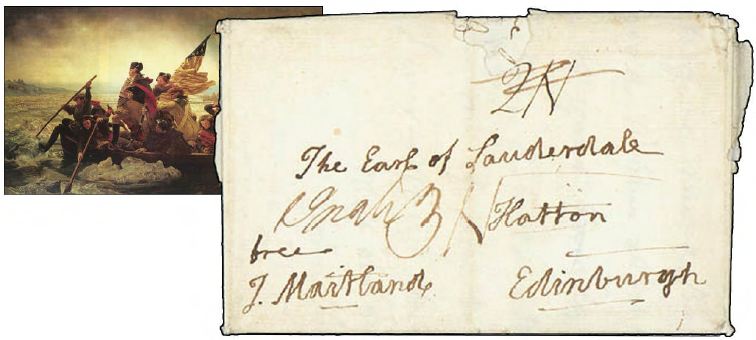 |
(So often we hear the story of the Battle of Trenton from the American point
of view. This letter from New Jersey to Scotland in February of 1777, gives
us some insight from the British point of view, and makes the Revolutionary
War a little more real, to hear it in the words of one who was there… Ed.).
|
In the Oct-Nov 1988 issue of La Posta, Tom Clarke wrote an article about a wonderful
Revolutionary War cover he had. Dated February 16, 1777, from New Brunswick, New Jersey,
it was from a British officer to his brother, the Earl of Lauderdale in Edinburgh, Scotland and
discussed, among other things, the recent Battle of Trenton. Tom kindly let me acquire it and for
many years it remained one of my favorite covers. Now that it's moving on to a new owner, it
seems appropriate to provide additional documentation of this gem. First let's consider some
background.
In July 1776, General Howe with more than 30,000 troops invaded New York. General
Washington's force of 18,000 fought bravely but was pushed out of New York and across New
Jersey. By Christmas, Washington's remaining 6,000 men had crossed into Pennsylvania. Many
of his remaining men would be going home when their enlistments expired at the end of the year.
In an historic campaign that revitalized the Revolution, Washington re-crossed the Delaware on
Christmas Day Eve and successfully attacked the 1,200 Hessians at Trenton. Then, he
successfully outmaneuvered the British, took on two companies of British troops at Princeton
and then withdrew to safe winter quarters at Morristown.
By the time Major Maitland wrote this letter, he and his company were comfortably
ensconced in their winter quarters in New Brunswick. The cover is shown in Figure 1.
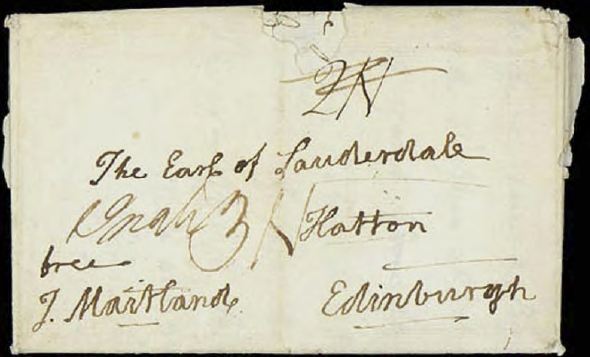
Fig. 1: Note that it is free franked for domestic postage. Unlike the American Post Office,
the British soldiers did not have free franking privileges. The Honourable Major Maitland
had franking privileges because he was also a member of the British Parliament.
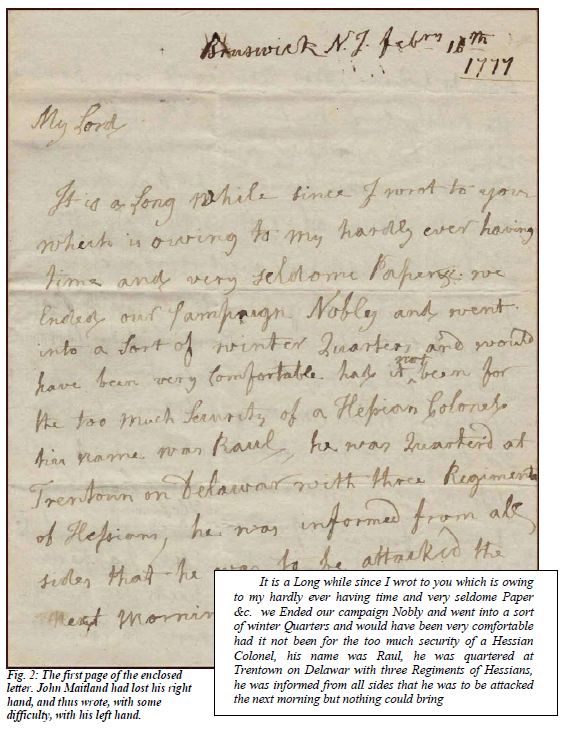
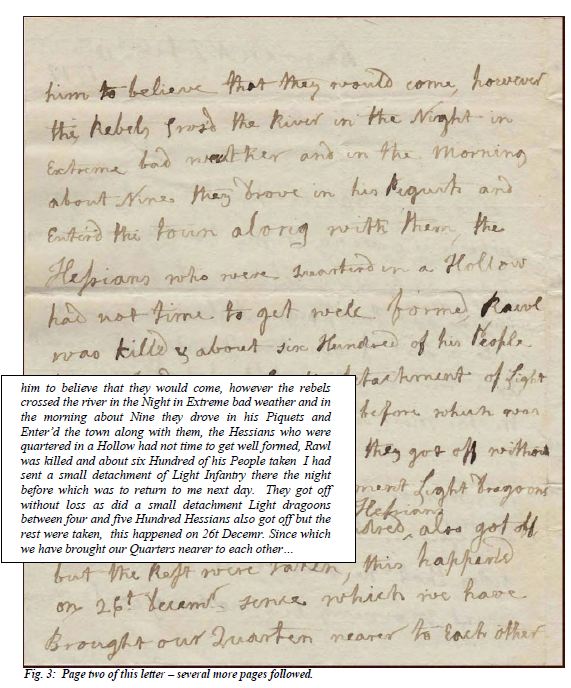
Fig. 1: Note that it is free franked for domestic postage. Unlike the American Post Office,
the British soldiers did not have free franking privileges. The Honourable Major Maitland
had franking privileges because he was also a member of the British Parliament.
The transcript of the full letter is as follows: (breaks added for easier reading – not in original text)
Brunswick NJ febry 16th 1777
My Lord
It is a Long while since I wrot to you which is owing to my hardly ever having time and very
seldome Paper &c.
We Ended our campaign Nobly and went into a Sort of winter Quarters and would have been
very comfortable had it not been for the too much security of a Hessian Colonel, his name was Raul,
he was quartered at Trentown on Delawar with three Regiments of Hessians,
he was informed from all sides that he was to be attacked the Next Morning but nothing
could bring him to believe that they would come, however the rebels crossed the river in the Night
in Extreme bad weather and in the morning about Nine, they drove in his Piquets and Enter’d the
town along with them
the Hessians who were quartered in a Hollow had not time to get well formed, Rawl was
killed and about six Hundred of his People taken I had sent a small detachment of Light Infantry
there the night before which was to return to me next day. They got off without loss as did a small
detachment Light dragoons between four and five Hundred Hessians also got off but the rest were
taken,
this happened on 26t Decemr. Since which we have brought our quarters nearer to Each
other so as to be in force everywhere. there has been some Scirmishing since but of no great
Consequence, except at Prince Town where a body of Eight or Nine Thouson rebells fell in with 17th & 55th on their march when the 17th and part of the 55 attacked then beat their first Line back killed
a great many officers and men and wounded one of their General officers and Retreated to a
different part of our army,
they have in this Province a body of about ten thousand men a purpose to disturbe our
quarters and convoys &c. but if they dont take very good care they may get Cursed knock.
I was at first quartered at Prince Town but now at this place. We are greatly Crowded but I
dont mind it. I have gone thro: a great deal of fatigue this year and thank God with good health I
have not had my cloths off since the month of June
General Howe I find, without my knowing it wrot home to Lord George Germagne in my
favour and I find he Expects me to get a company in the Guards. I wrot last Packet to Lord George
G- requesting his good offices and telling him that Sir William Howe had wrot in my favor I believe
though he had never told me of it, in Short I feel they must give me something we are so crowded
that I sleep 11 in a Room and we ar obliged to feight for Hay and Corn very often, which is a Dear
way of buying it.
There are forteen shirts of Mine Ready made at Mr Robertsons I wish they would make
them up to two Dozen and send them to Hog and Kinlock to be forwarded by the Portsmouth
Waggon directed to me to the care Lieut. Archbald Marines I shall be sure to get them or any, sent
in that way as it comes by a man of war. A cask of the very best ale or any thing of that sort, might
be sent by Glasgow Murthon Hams a good thing, if John Robertson could get me a good Jedburgh
Cheese, old, it would convince our army that Tiviotdale beats Chesshire, I was happy in having it in
my power to make a Sergant of 22d an officer recommended by the good town Jedburgh the day
after got their letter.
I beg to be remembered all our frinds in Hoddington Jedburgh & Larrder. if the war lasts
another year I intend Please God to come home to attend Parliament in the meantime they ought to
give me a Bonny thing
my most sincere good wishes attend My Lady and every one of your family God Blis you all
Pray desire John Robertson to buy a Lottery Ticket for me if there be a Lottery this year, I ever am
Your Most Affect &
Most obliged Brother
John Maitland
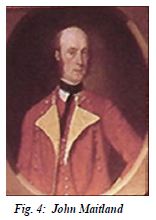 |
The author of this letter, John Maitland, pictured in Figure 4,
was a fascinating person.
He was born in 1732, the 10th son of Charles Maitland, the
6th Earl of Lauderdale. Lauderdale was one of the ranking noblemen of
Scotland. Typically, younger sons of nobility considered the military as
a career. John Maitland's older brother James succeeded to the title in
1744. John Maitland was appointed a Captain of Marines in 1755 and
fought throughout the Seven Years War (known in North America as the
French and Indian War) and lost his right arm in action in the East
Indies. The fact that he had to write with his left hand can be seen in
the appearance of his handwriting. |
In 1763, he was retired on half
pay. In 1773, he was elected to the British Parliament and was re-elected in 1777. In 1775, he
was recalled to active duty and sailed for Boston. Shortly after he arrived, he led one of the lead
companies at the Battle of Bunker Hill. He was promoted to Major two months later and was
temporarily transferred to the Savannah campaign.
In July 1776, Major Maitland landed with General Howe's force invading New York.
Figure 5 shows a cover Maitland sent his brother, the 7th Earl of Lauderdale, from Staten Island,
dated July 8, 1776. A quick examination of this letter shows that it was actually hand-written by
someone else, but signed and addressed by Maitland. The letter mentions his raids on Long Island.
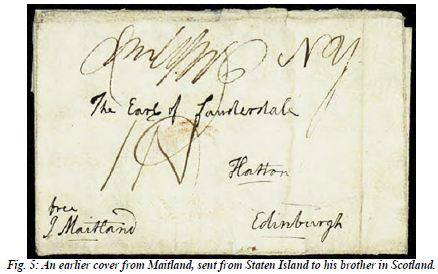
Major Maitland fought throughout the New York and New Jersey campaigns, and led the
detachment sent to recover Trenton after General Washington's raid.
In October 1778, Maitland transferred to the army. He was appointed Lieutenant Colonel
of the 1st Battalion of the 71st Foot (Fraser's Highlanders). He served with distinction in South
Carolina and Georgia. In October 1779, while he was in command at Beaufort, South Carolina,
Savannah was surrounded by French and American troops. Maitland brought 800 men from
Beaufort by a march through the swamps to successfully reinforce the British garrison. Shortly
thereafter, he succumbed to malaria. The exact date of his death is uncertain. We've seen dates
ranging from October 9 to October 25, 1779.
Stedman's contemporary book on the American War reports:
“One circumstance alone served to cloud the joy of the garrison on their recent success.
This was the success of the highly-esteemed and much beloved officer the honourable lieutenantcolonel
Maitland, who fell a martyr to a bilious disorder contracted from the pestilential vapours
which arise from the marshes during the hot and sultry season in that unwholesome climate. He
was attacked by it before he left Beaufort. It gathered strength in his route through the marshes to
Savannah, and preying upon him during the siege, soon afterward put a period to the existence of
this gallant officer; whose memory will be dear to Britons, so long as manly fortitude, unstained
honour, and highly-improved military talents, are held in estimation.”
Maitland was originally interred in Savannah but many years later his remains were returned
to Scotland. Maitland and Major John André, executed for his involvement with Benedict Arnold,
were the only British casualties of the Revolutionary War whose remains were repatriated.
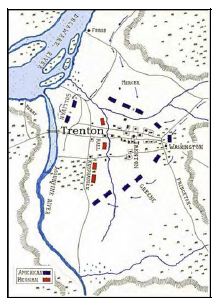
Map of the Battle of Trenton, Dec. 26, 1776. Washington’s troops crossed above Trenton.
References:
“A Timeless Letter From 1776/1777,” Tom Clarke, La Posta, Oct-
Nov 88.
Biographical sketches of UK servicemen in the 1775-83 American
and World War, http://www.silverwhistle.co.uk/lobsters/index.html
Boatner III, Mark M., Encyclopedia of the American Revolution, 3rd
Edition, Stackpole Books, 1994
Hahn, Calvet M., Personal Correspondence, 1992.
“List of the General and Field Officers as they Rank in the Army;
Officers in the Several Regiments of Horse, Dragoons, and Foot, of
the British and Irish Establishments,” by The Right Honourable,
The Secretary at War, London, Editions for the years 1775 through
1780.
Stedman, Colonel Charles, The History of the Origin, Progress, and
Termination of the American War,” Colonel Stedman served under
Sir W. Howe, Sir H. Clinton and the Marquis Cornwallis, London
1794, also on Google books at http://books.google.com/.
For George Washington’s account of the Battle of Trenton, see http://americanrevolution.org/delxing.html.
Map above from http://www.britishbattles.com/battle-trenton.htm.
(2/9/2012)
Past Featured Covers
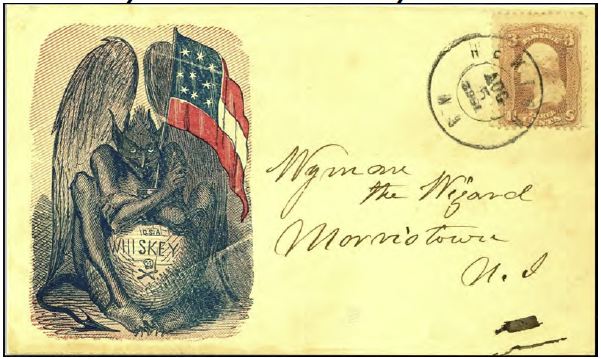 |
November 2011 Issue of the NJPH Journal New Jersey Civil War Covers -Wyman the Wizard!
If you were to conduct a detailed review of the 190 Civil War
patriotic covers illustrated in NJPH whole nos. issues 100 and 117, or the
online exhibit of covers shown at NOJEX, you can begin to see the
emergence of some interesting patterns among the covers. An obvious
pattern is that there are several different correspondences represented in
the illustrated covers. Read more.....
|
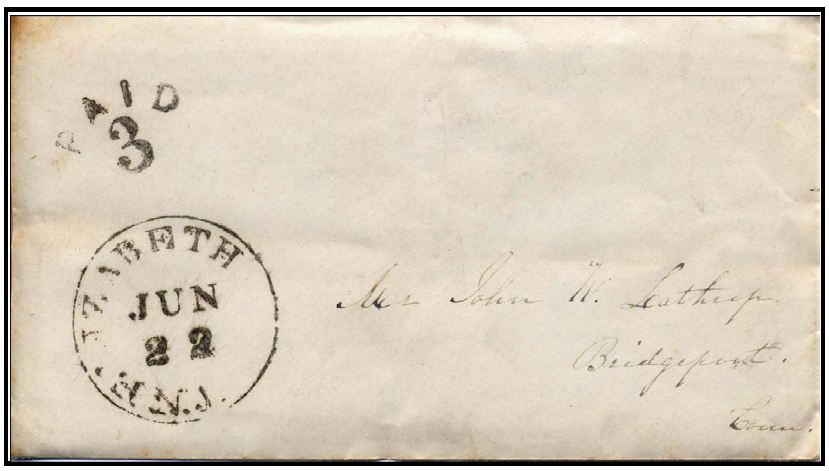 |
August 2011 Issue of the NJPH Journal New Elizabeth, NJ Marking
ELIZABETHTOWN STAMPLESS POSTMARK ALTERED TO READ “ELIZABETH”!
This newly-discovered Elizabeth postmark falls at the time the name was changed from
Elizabethtown to Elizabeth, and a new handstamp was created from an existing Elizabeth-town
postmark.
Read more..... |
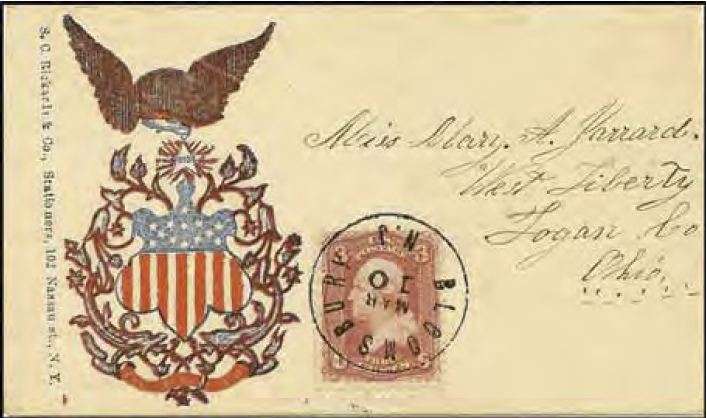 |
May 2011 Issue of the NJPH Journal Civil War Patriotic Covers from New Jersey.
The cover below is dated Mar. 10 from Bloomsbury, NJ to West Liberty, Ohio, with the imprint of S.C. Rickards, Stationers, 102 Nassau Street, N.Y., and shows one of the rare New Jersey Civil War patriotic images.
Read more..... |
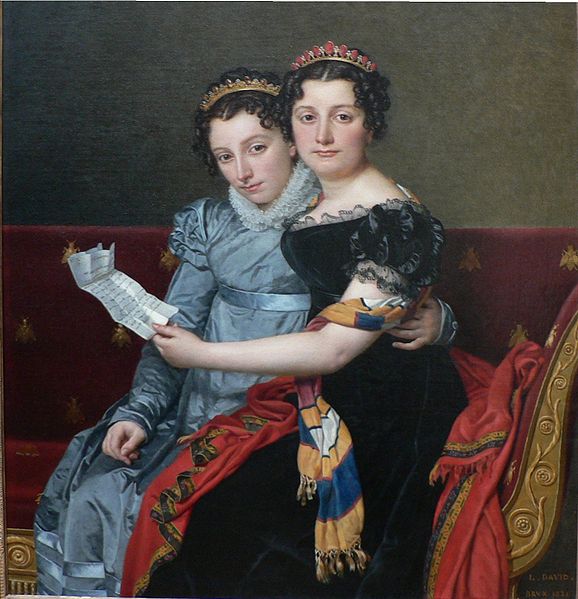 |
February 2011 Issue of the NJPH Journal A Folded Letter in art - was it from New Jersey?
This painting by Jacques-Louis David, painted in 1821, shows two Bonaparte princesses reading a stampless folded letter from their father, Joseph Bonaparte, brother of Napoleon. Was it written to them from New Jersey?
Read more..... |
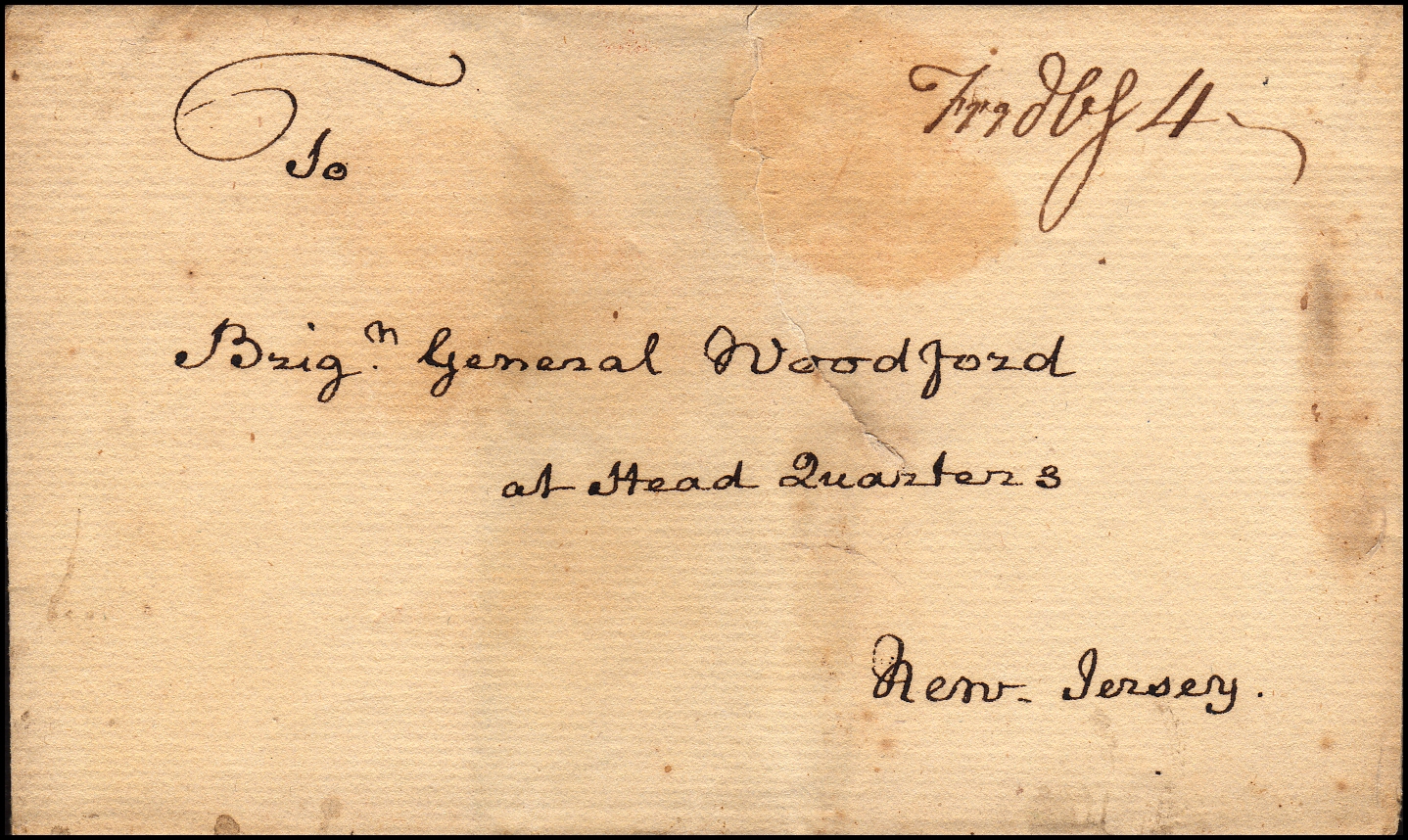 |
November 2010 Issue of the NJPH Journal REVOLUTIONARY WAR COVER
The cover of our most recent journal features this Revolutionary item, from Don Chafetz’s prize-winning exhibit of Morris County Mail Service, 1760 to 1850.
Read more..... |
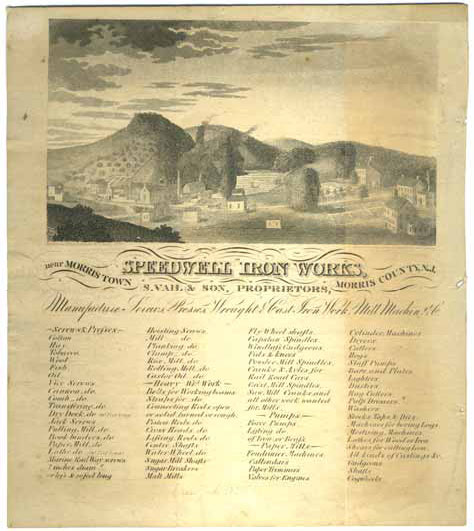 |
August 2010 Issue of the NJPH Journal NEW JERSEY ILLUSTRATED LETTER SHEETS
These items were made popular by the nice ones that exist from the California Gold Rush days, and those used during the Civil War, where they depicted contemporary scenes at the top of the letter sheet, the rest of which was then used to write a letter.
Earliest examples usually included an attached sheet and were used as stampless folded letters.
Later ones were more like letterheads, and were sent enclosed in envelopes.
Read more..... |
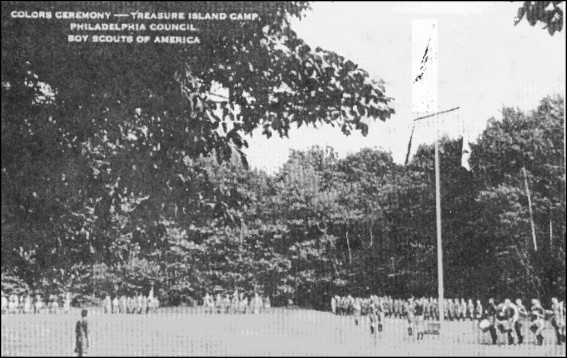 |
May 2010 Issue of the NJPH Journal Celebrates the 100th Anniversary of the Boy Scouts of America!
Treasure Island Scout Camp occupies a fifty-seven acre island in the Delaware River between Pennsylvania and New Jersey. The camp is operated by the Cradle of Liberty Council (formerly the Philadelphia Council), Boy Scouts of America. Read more..... |
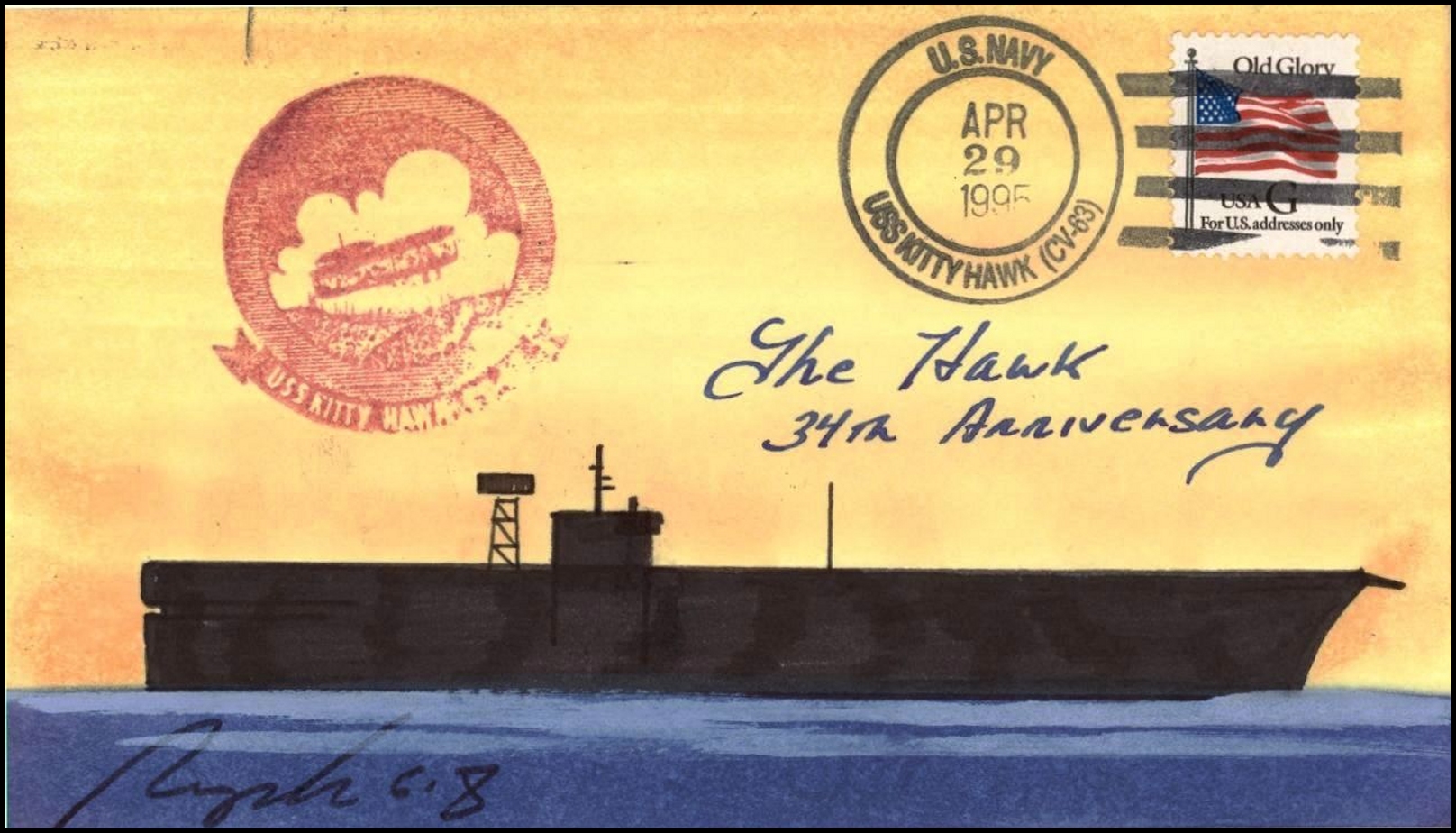 |
February 2010 Issue of the NJPH Journal featuring a 1995 cover of the aircraft carrier USS Kitty Hawk, the last of the conventionally-powered US aircraft carriers, decommissioned in 2009.
This great ship served almost 50 years in service of her country.
Read more..... |
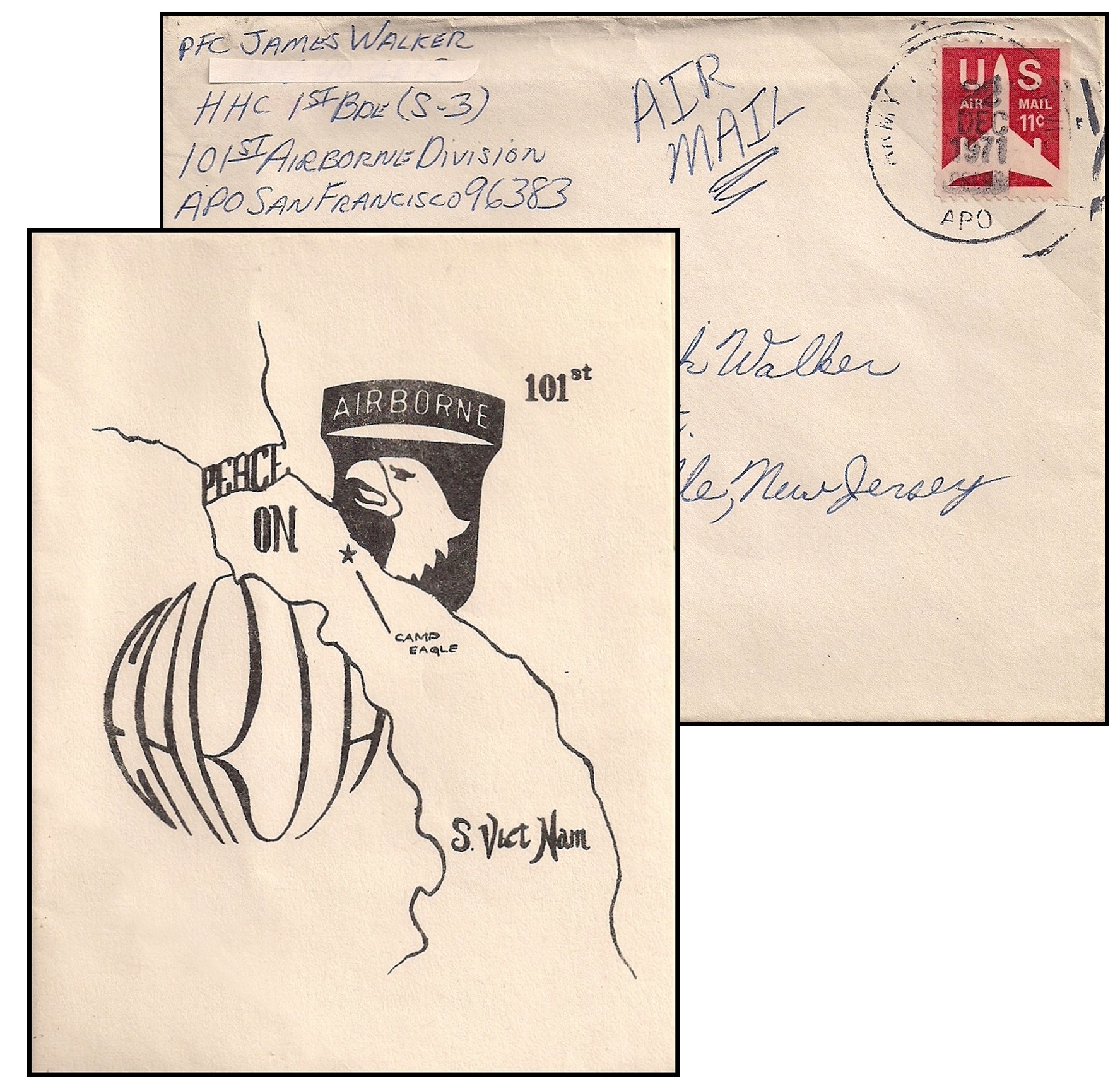 |
November 2009 Issue of the NJPH Journal featuring a Holiday Greetings from Viet Nam
Just before Christmas of 1971, a GI-produced Christmas card was distributed to the troops of the 101st Airborne for them to send home. A hand-made envelope served to carry it home to New Jersey.
As it was late in December, member Jim Walker used a U.S. air mail stamp instead of the usual free frank available to soldiers in combat,
Read more..... |
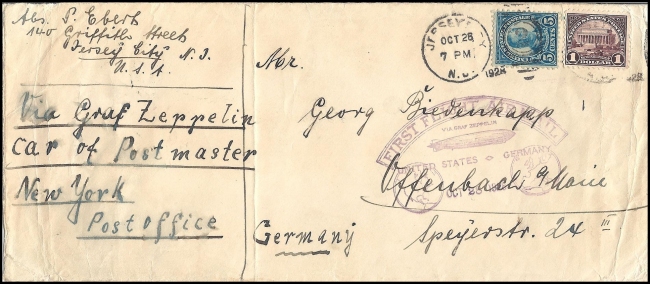 |
August 2009 Issue of the NJPH Journal featuring a a Graf Zeppelin cover.
L127 First Trip to the USA in 1928. Special credit to John Trosky for this nice article!
WEB-SITE SPECIAL: an addendum to this article with additional information on an originating 1928 LZ-127 cover from Len Peck!
Read more..... |
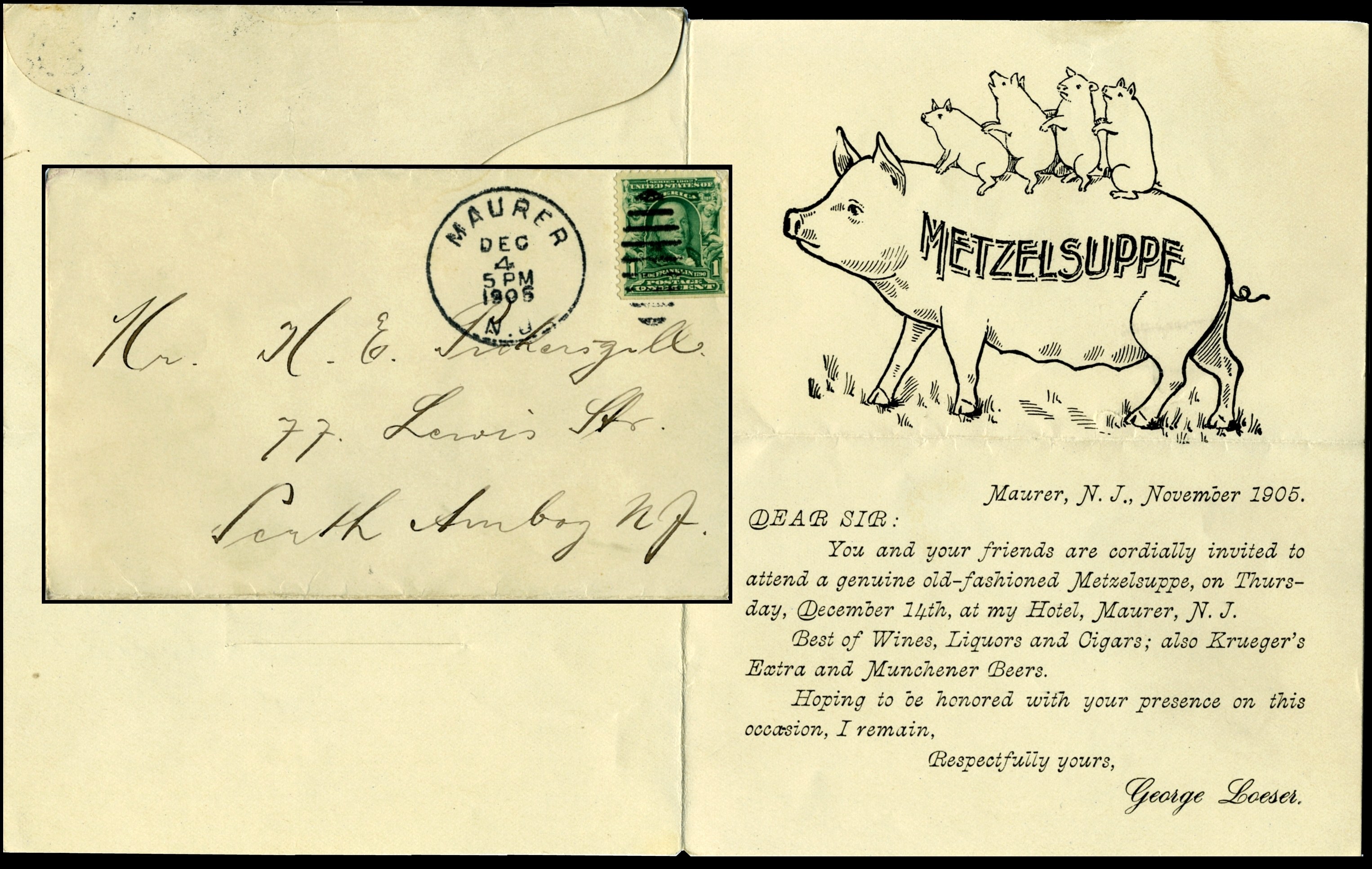 |
May 2009 Issue of the NJPH Journal featuring a DPO cover from Maurer, New Jersey.
A pretty little letter sheet invitation from a local hotel in Maurer (now part of Perth Amboy, Middlesex County), NJ turned up at the Garfield-Perry Show in Cleveland, in JWF (Jim Faber’s) stock. Used in 1905, it is from a community that literally does not exist anymore. The location is now the site of a large “tank farm” belonging to Chevron.Read more..... |
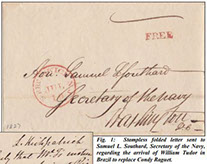 |
February 2009 Issue of the NJPH Journal featuring a cameo campaign cover.
A December 15, Hoboken, NJ postmarked Embossed Cameo Campaign Envelope produced by William Eaves was offered this March by Robert A. Siegel Auctions featuring a beardless Abe Lincoln. Only a few examples are known. This Hoboken, New Jersey cover hammered on March 25, 2009 for $2600.00 before the 15% buyers premium! Read more..... |
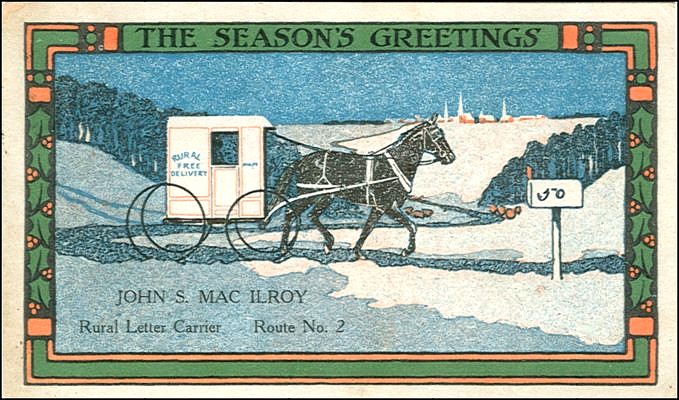 |
November 2008 Issue of the NJPH Journal featuring a cover of seasonal greeting.
A RFD ”Season’s Greetings” post card, cancelled December 24, 1915 with a Pittstown, NJ postmark, sent by the carrier on Route 2 out of Pittstown to the people along his route. Special thanks to Member Jim Walker for sharing this cover. Read more..... |
Members: One of the benefits of membership is sharing your interests and collections! If you would like to share an interesting single item from your collection, or have multiple items to share - the NJPHS Galleries offer you the opportunity to put your collectibles on center stage. Please e-mail your webmaster about contributing to our on-line Galleries. We can even help you if you do not have a scanner or digital images. Just ask. Remember, we are always looking for articles of interest for the NJPH Journal, and would welcome your contribution whether it's a single page or five page article.
If you are not yet a member, please consider the benefits of joining and the satisfaction you'll get by sharing with your fellow collectors: Become a Member |
